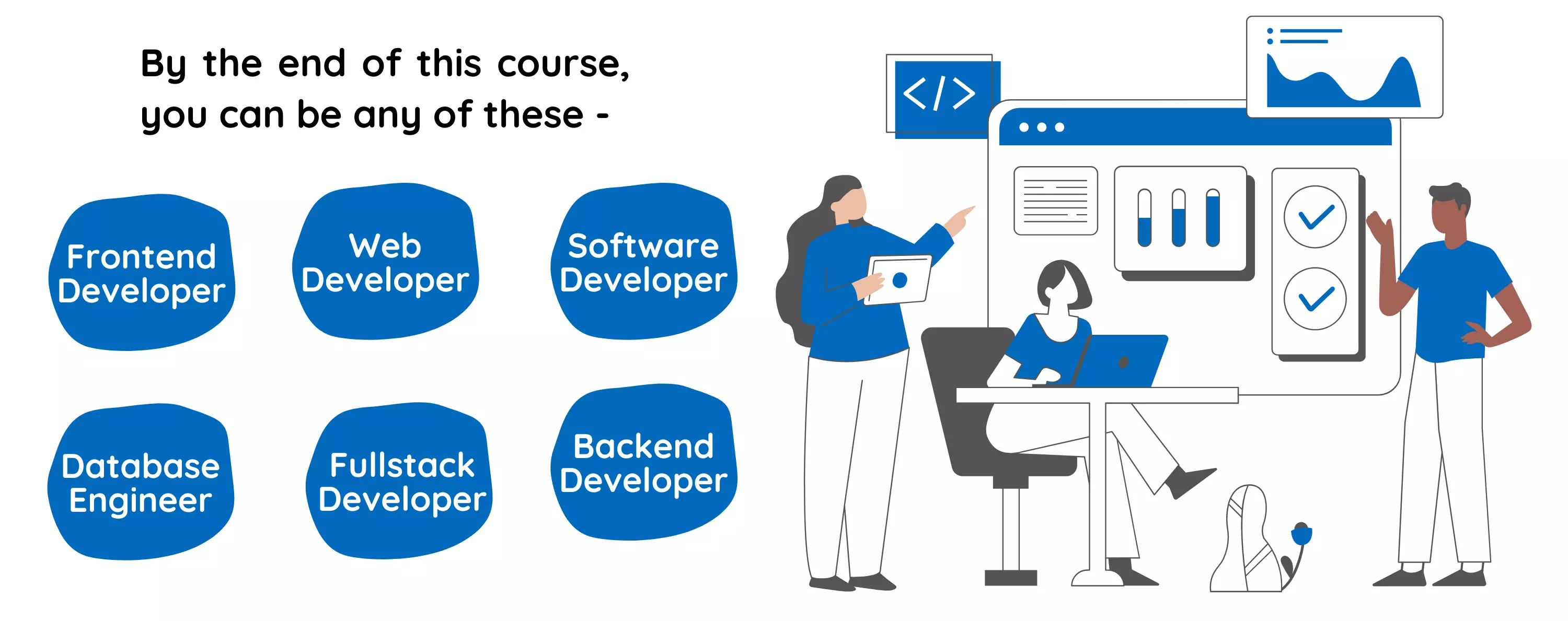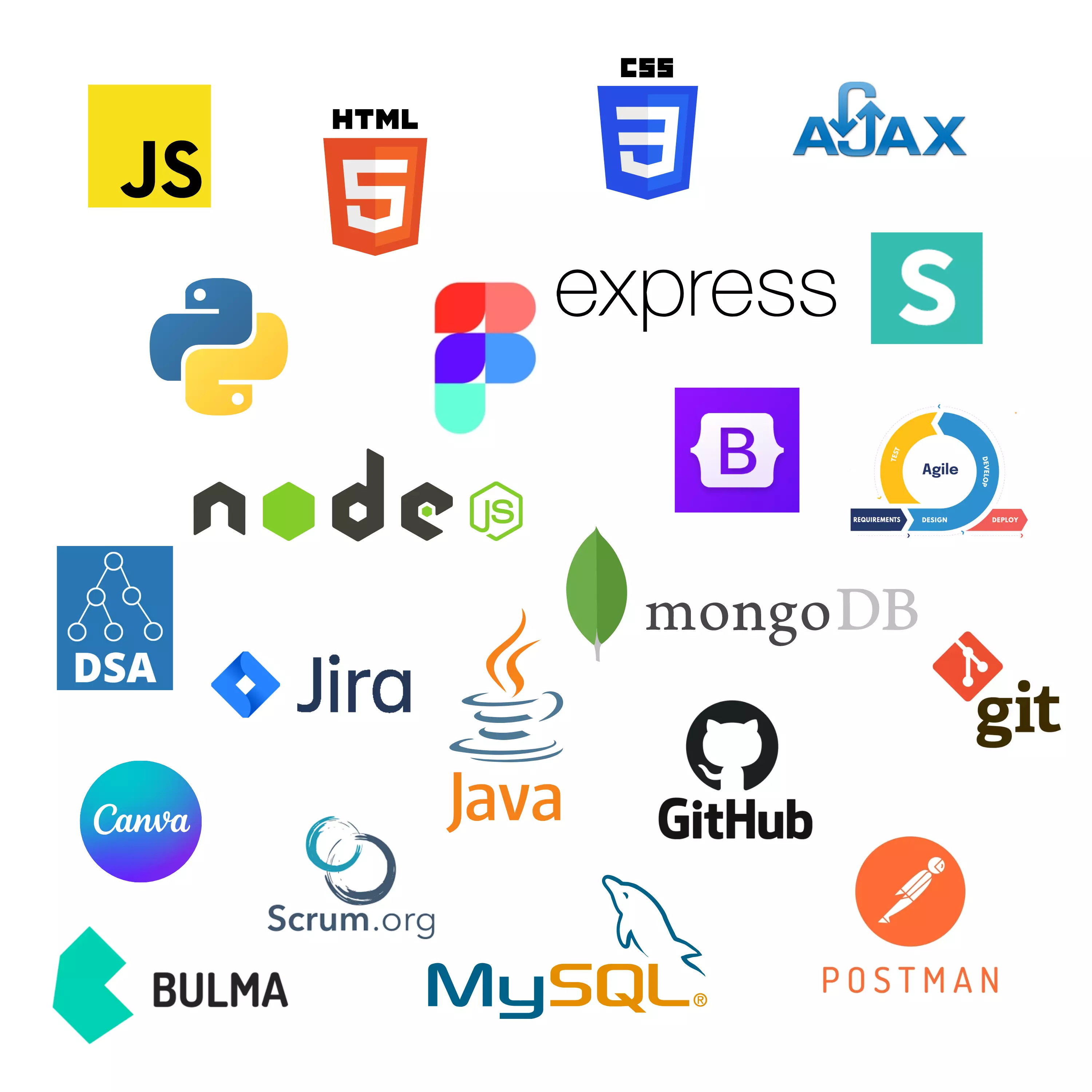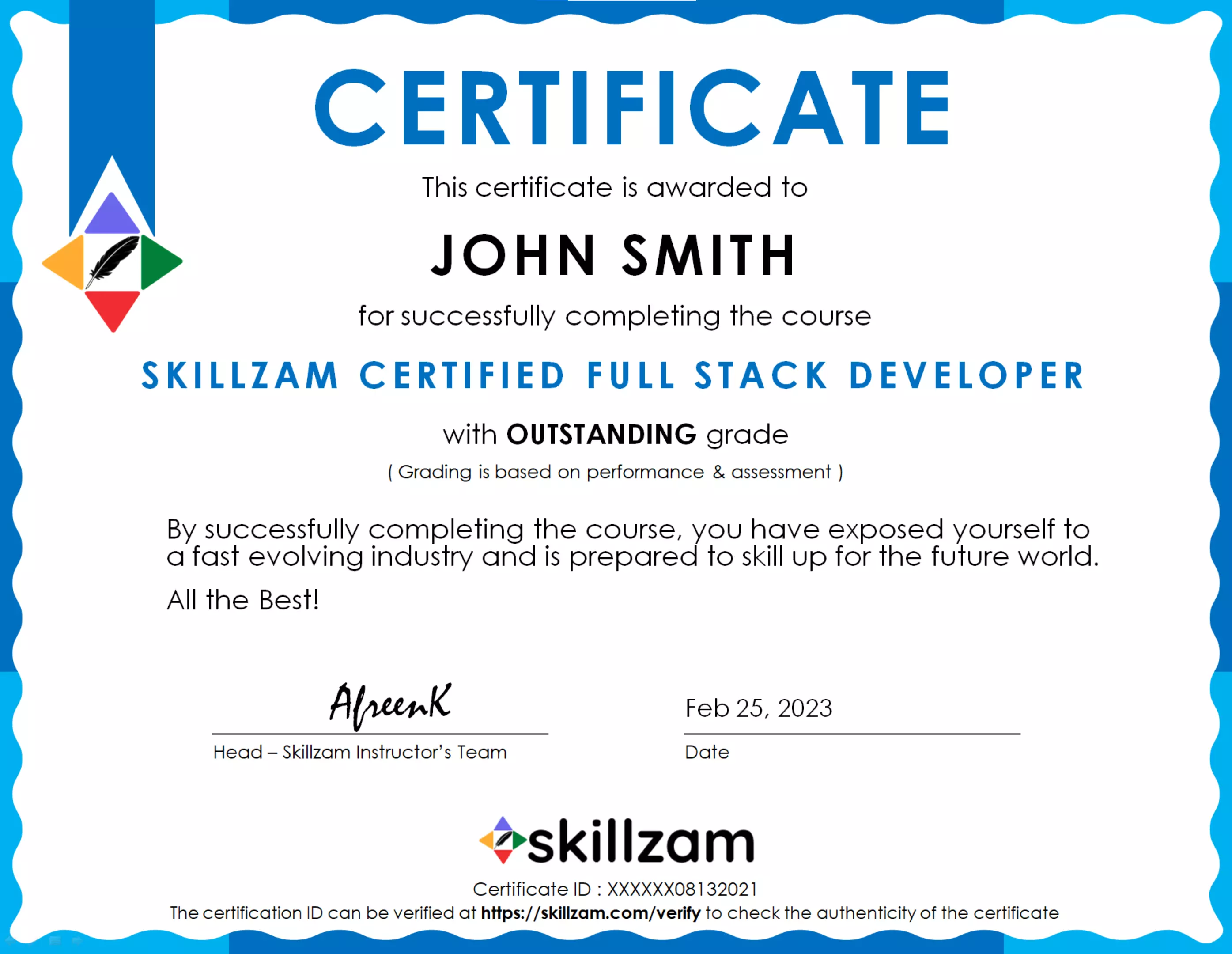Time for Both
Theory & Practical
Unlimited Placements
Get jobs through Workzam
Affordable Fees
Excellent ROI
Skillzam Certified Full Stack Developer (SCFD)
...
Skillzam Certified Full Stack Developer (SCFD), is a course on end-to-end software development.Through an advanced curriculum & project-based structure, students learn todays cuttingedge development technologies. The Fullstack course prepares graduates for software development roles like Front-end Developer, Backend Developer, FullStack Developer, at top-tier technology companies.
JavaScript is the most in-demand programming language of 2023. Besides web & software development, JavaScript is used for mobile apps and building web servers. This full stack web developer course is designed such a way that you will learn how to build the UI or front end by using technologies like HTML5, CSS3, JavaScript, Bootstrap & to design / develop the database by using MongoDB, along with capstone projects.
Course will also include latest & greatest tools/technologies of today, such as Java/Python, ExpressJS, NodeJS, AJAX, RESTful API, Postman, DOM, NoSQL database, Agile Scrum, Jira & so on.
You bring the energy, curiosity, and dedication, and we'll provide a world-class school for becoming an expert software developer.

SCFD - Learning Path
...
Technology Tools, Languages & Frameworks
...
Course Content
...Computer & Web Fundamentals
SDLC, Agile & Jira
HTML5
CSS3
JavaScript
DOM
AJAX
Bootstrap
Python
Java
NodeJS
ExpressJS
RESTful API
SQL
MongoDB
Mongoose
Deployment
Fresher's Final lap
Get certified based on performance and assessment
...
FAQs
Frequently Asked Questions
...
What are the Tecnhology paths available?
Can students enroll for more than one Technology Path?
Yes, candidate can select more than one Technology Path specialization.
How much does it cost for Skillzam Programs like LEAP or SCEP?
The applicable fees are very much affordable. Please call 80500 80399 to get the latest fee details and also referral discounts.
For whom does SCEP Program better applicable?
For students in their 1st, 2nd or 3rd year college, can get ready for high paying jobs with SCEP (Skillzam Campus Enable Program). Study 3 hours/week alongside your academics. (Any Degree or Branch).
For whom does LEAP Program better applicable?
For Freshers, i.e. Final year students or Graduate / Post Graduate candidates (Any Degree or Branch), who looking for a Technology Jobs can enroll in LEAP (Learning Excellence through Advanced Program). Intensive program with a proven curriculum & become a software Professional.
Are LEAP & SCEP Programs available online or offline?
Both Skillzam Programs are available in online/offline mode. Offline sessions will be held at Belagavi regional headquarter.
LEARNING CENTER :
1st Floor, Pearl Plaza,
Plot# 271, Shivbasava Nagar,
Nehru Nagar, Belagavi,
Karnataka 590016
What about the placements?
Skillzam works in partnership with Workzam to offer unlimited placement opportunities for our students.
We have a dedicated team of HR professionals, who will help our students get their first dream job.
Over the years, we have developed a very healthy relationship with our more than 500+ corporate clients, who would be more than willing to hire our students.
Is there any installment option for fees payment?
Yes, we do have an installment options available.
What does interview preparation module contains?
Interview Prep Module contains Non-technical topics like Quantitative Aptitude, Reasoning, Verbal ability, Reading comprehension, resume building, mock interviews and more.
Skillzam : Apply Now!
...Step 1
Step 2
of
How would you rate this course overall?
- Skillzam Team
Write a public review